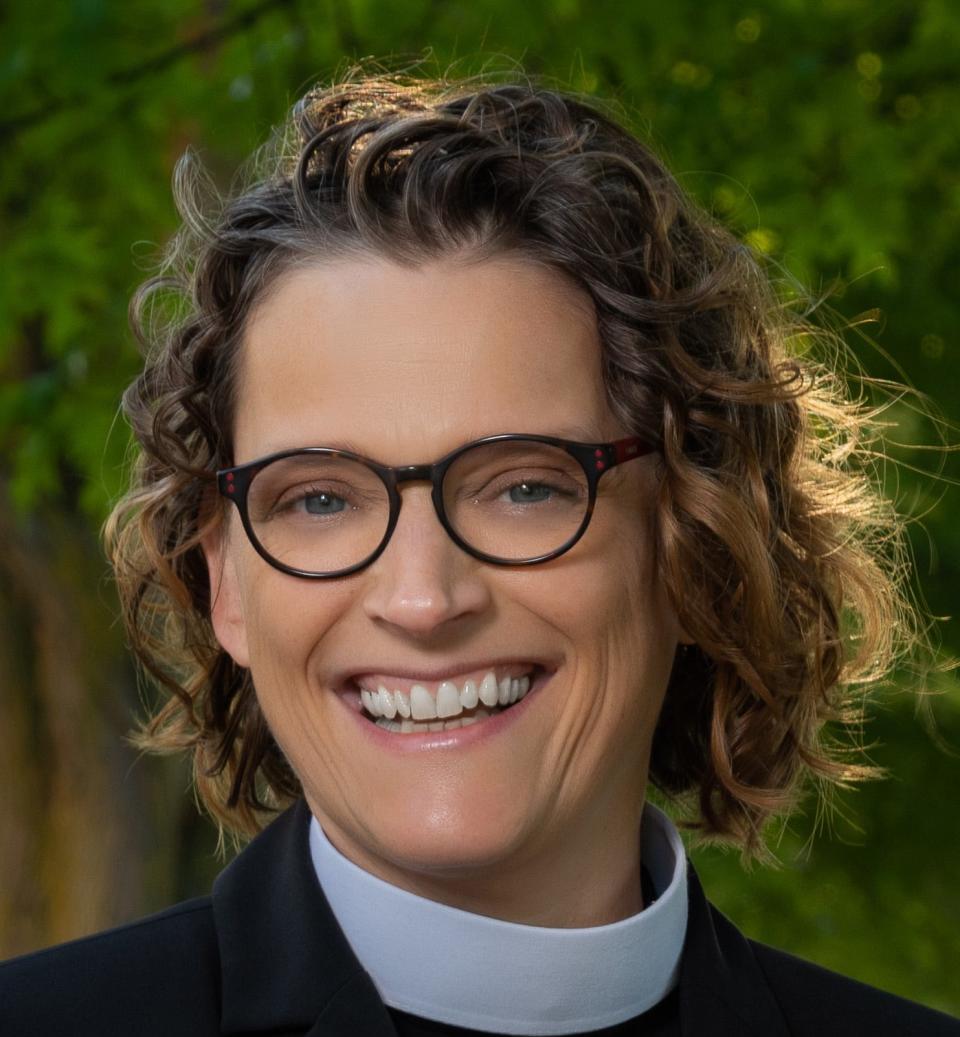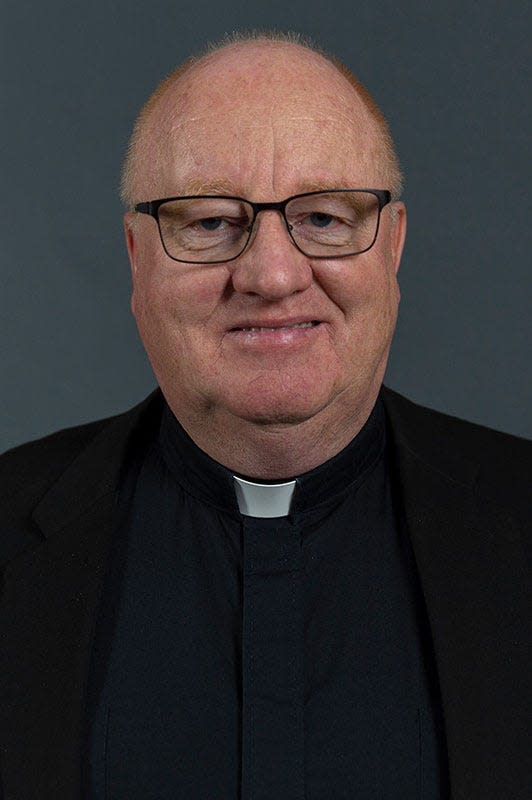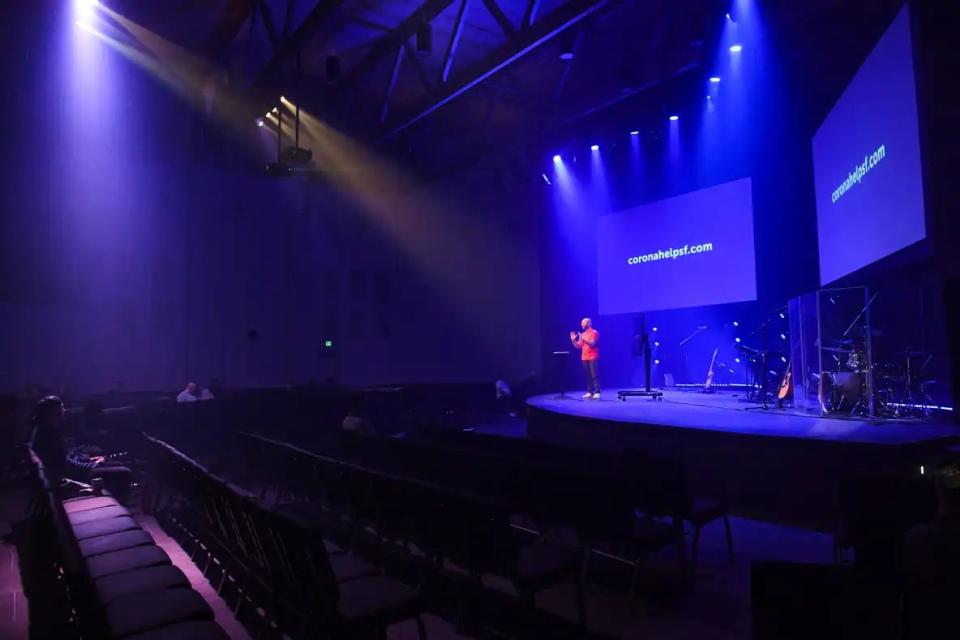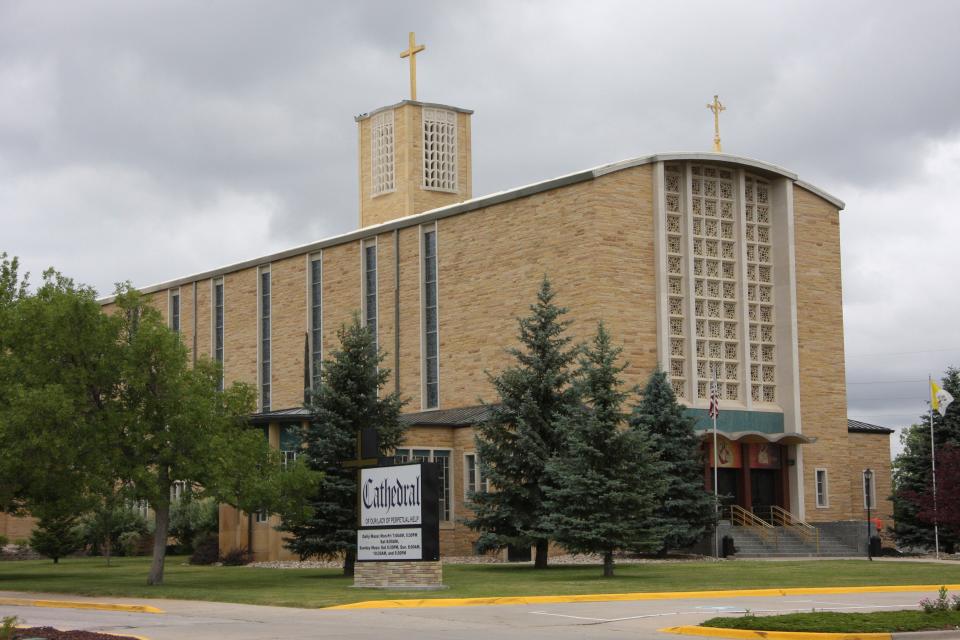Easter services a chance to reverse church attendance decline in SD
South Dakota churches will undoubtedly see attendance jump duringEaster services on Sunday as Christians come out in large numbers tocelebrate the resurrection of Jesus Christ.
But behind the scenes, many church leaders will worry whether they canmaintain the holiday momentum as religious affiliation and churchattendance continue a long downward slide across the United States.

The Rev. J. Joseph Holzhauser, pastor of Saints Peter & Paul Catholic Church in Pierre, is one of numerous clergy in South Dakota trying to rebuild or at least maintain current church membership levels.
In roughly the past decade, the church has seen attendance at its Saturday evening and two Sunday morning masses fall by 13%, from about 800 a weekend eight years ago to 700 a weekend now.
In the Sioux Falls Catholic Diocese, which serves all of East River South Dakota, records indicate that church attendance in 2022 was down 26% compared with 2010 and that membership has also fallen.
More: Newly-elected bishop will visit Sioux Falls' United Methodist churches this weekend
Holzhauser said there had been “slippage” in church attendance and affiliation for several years prior to the COVID-19 pandemic. But churches have seen a significant decline since.
“We’re never going to get everyone back,” he said. “It’s not necessarily anti-God. It’s just that people’s habits are changing. It (the pandemic) severed some ties, and it’s hard to break a habit, good or bad, and we’ve seen this new habit of not going to church.”

Membership in the Evangelical Lutheran Church in America, one of the largest churches in South Dakota, is down 40% over the past 30 years nationally and has fallen by almost 12% in South Dakota over roughly the past decade. Attendance at Lutheran churches in South Dakota is down about 10% since 2013, and the ELCA recently closed churches in Newell and Bradley.
Prior to the pandemic, Holzhauser’s church developed a live-streaming option for churchgoers who were infirm or who wanted to stay home and watch masses live or on video on the church website. Online attendance has grown since the pandemic.
Holzhauser said Easter and Christmas are two annual “surge points” in church attendance that he hopes may attract new members or encourage occasional visitors to attend more regularly.

Parish leaders have asked church members who attend regularly to encourage attendance among occasional attendees.
“We’ve asked them to make peer contacts, to talk to their friends and neighbors,” he said.
Holzhauser said churches in America seeing reduced membership may find greater commitment in parishioners who remain. “What we’re going to end up with is not as many people, but those who are left behind will be really really invested,” he said.
More: How Sioux Falls church leaders navigated Ash Wednesday during this week's blizzard
Holzhauser said continued declines in attendance and membership may delay or put an end to maintenance of existing buildings or construction of anything new. “I think the outcome will be some of the physical plants, brick and mortar things, will just have to go away,” he said.
Some churches, especially in rural areas undergoing population declines, may close or consolidate if attendance continues to fall off.

The importance of religion in the lives of individuals and religion’s influence on the country as a whole are also falling. Individuals who said religion is very important in their lives fell from 58% in 2001 to 49% in 2021. Gallup polling in 2001 showed that only 39% of Americans felt the influence of religion was falling in the United States, compared with 78% who said its influence was falling in 2021.
Poll results also show a decline in belief in the Bible, God, angels, heaven and hell.
Those changing beliefs have resulted in lower religious affiliation and reduced church membership and attendance, according to Gallup.
In recent surveys, the people who do not affiliate with any religion, the so-called nones, are the fastest-growing segment of the national population as indicated in surveys about religion, faith and beliefs. Their ranks nearly tripled in the past 20 years, from 8% in 2001 to 21% in 2021. For several years in the 1950s, only 1% of Americans reported no religious affiliation.
Religious scholars and church leaders say the decline in church membership and attendance is being fueled by many factors.
They include demographic changes that are reducing rural populations where churches are a cornerstone; greater political and cultural divisions within modern society that are driving people apart; generational changes that have made young people less willing to join groups; and self-inflicted wounds within organized religion in the form of sexual and financial crimes and scandals.
A decline in church membership reduces church revenues and availability of human capital, which weakens a church’s ability to perform charity work and other good deeds.
On a spiritual level, some church leaders believe they are in a fight for the soul of the state, of the nation and of individual human beings.
More: Rapid City Diocese keeps priest from public ministry
Zach Kingery, a pastor at two United Methodist Churches in southeastern South Dakota, said it is impossible to overstate the important role churches play in communities and the lives of individuals.
“Every week we close the service and I tell people that they are sent out into the world to share the word of God and be the light of Christ, to be more like Christ, to reach out to others and to help people,” he said.
Religious leaders in South Dakota are taking steps to reverse the trend.
On a national level, the Catholic Church launched a three-year effort that will trickle down to the diocese and parish levels and include a detailed look at attendance and membership trends while also seeking local solutions to increase church membership that can be duplicated across the country.
More: Christian film 'Jesus Revolution' to debut in Sioux Falls with Celebrate Church connection
The Sioux Falls diocese recently created a new position to foster growth of churches and to more assertively seek new church members.
The ELCA in South Dakota recently created a rural liaison position to aid small towns in protecting the church populations they have but also to listen closely to the needs of rural churchgoers or potential members and respond to any desires or concerns to spur greater membership.

Church leaders across the state say they must be more welcoming and upbeat, listen more to the needs of individuals and communities, and foster an environment of encouragement.
“As the world keeps turning and changing around us, we expect the church to always be the same,” said Constanze Hagmaier, bishop of the South Dakota Synod of the ELCA.
“God will be the same, but nowhere does it say the church must be the same. If we can’t hear the voices that are out there and respond with faith, then we’re emptying the church on our own. We’re just helping them pack and go out the door because we refuse to open ourselves up to actually listen.”
— This article was produced by South Dakota News Watch, a non-profit journalism organization located online at sdnewswatch.org
This article originally appeared on Sioux Falls Argus Leader: Easter services a chance to reverse church attendance decline in SD

